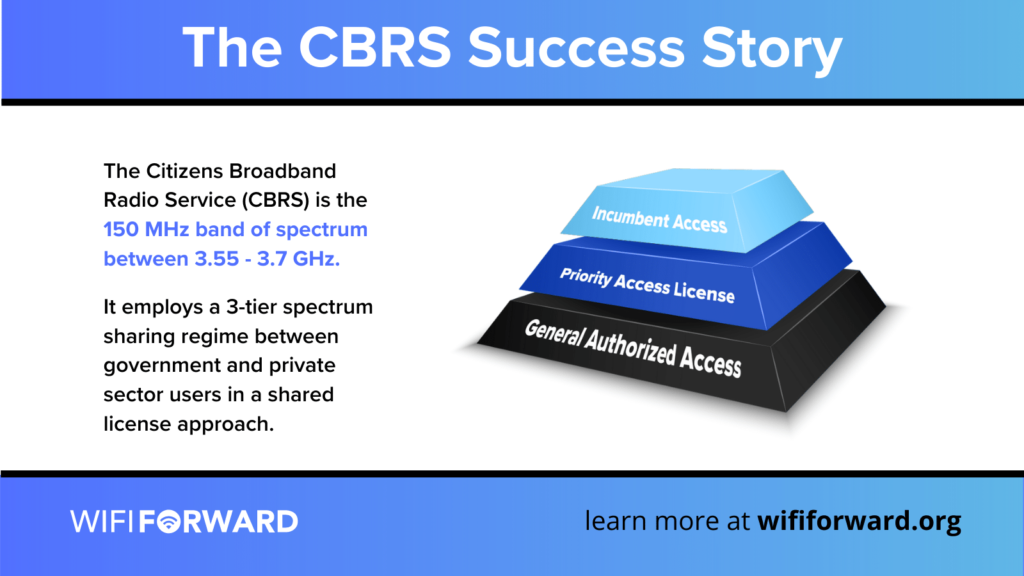The Citizens Broadband Radio Service (CBRS) is the 150 MHz band of spectrum between 3.55-3.7 GHz. It employs a 3-tier spectrum sharing regime between government and private sector users in a shared license approach. This has significant benefits below:

COMPETITION:
CBRS allows for multiple operators to share the same frequencies. This promotes competition and enables new entrants, increasing the number of entities using the spectrum.
Most commercially available low-band and mid-band spectrum rely on an exclusively licensed approach that sets high power levels and large geographic license areas that support the deployment models of the largest carriers. This means that larger nationwide carriers dominate spectrum auctions, making it harder for new players to join and foster more competition.
The CBRS model, on the other hand, advances the FCC’s commitment to a balanced spectrum policy rather than further concentrating the nation’s licensed bands in the small group of nationwide mobile phone carriers who have dominated those resources for decades.
Both exclusively licensed and shared licensed bands need to be made available to accommodate new and existing players.
INNOVATIVE USE CASES:
Shared licensed bands balance new operators with incumbent uses.
In order for the industry to continue to grow, there needs to be room for innovation. This can only occur if spectrum is made available to develop those new uses.
Shared licensed bands, unlike exclusively licensed bands, bypass the difficult process of relocating existing users to accommodate new ones. That means that the spectrum can be put to work quickly for new uses.
We are already seeing highly successful and highly varied deployments in the CBRS band, resulting in increased broadband access and connectivity in education, health care, agriculture, manufacturing, public safety and the military.
Public Safety:
Cox Communications announced a collaboration with the City of Las Vegas to install connected devices on a CBRS network in a downtown park for public safety purposes.
Education:
In Virginia, the Arlington Public Schools 1-2-3 Connect Me initiative uses the CBRS band to establish a private network solely for students to connect to the school system’s network from home without requiring the county to build additional fiber. With this initiative, 99.2% of all students participated successfully and 95.4% of all student devices are active on the network on a daily basis.
Health care:
Memorial Health System Clinic in Springfield, Illinois uses the CBRS band to connect outdoor hotspots to indoor networks, enabling nurses to test and triage patients outside the hospital. Hospitals also use the CBRS band for asset tracking, critical communications and patient monitoring.
Manufacturing:
A Foxconn factory in Wisconsin uses the CBRS band to connect industrial equipment, including mobile equipment, to a private network in a 100,000 square-foot facility.
Automobile:
US Ignite is planning a dedicated LTE network, using CBRS, for Internet of Things (IoT) research at Fort Carson in Colorado. It will support the upload of vehicle data and video traffic from route-monitoring cameras and, longer term, will support broader IoT research.
